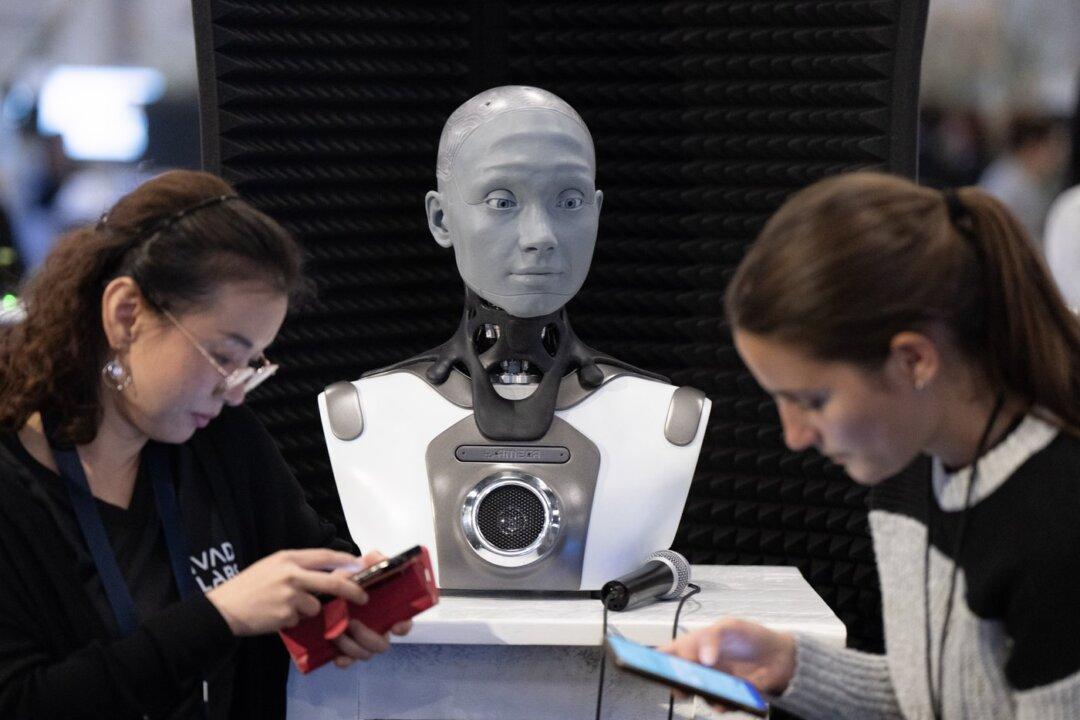The EV executives spoke on Jan. 9 at the Computer Electronics Show—CES 2025—in Las Vegas.
Tina Jeffress, a group manager for energy and sustainability at Panasonic; Sabrina Rathgeber, director of Bosch’s global battery business, and Sujay Sharma, CEO of BP’s Pulse Americas business, weighed in on the future of EV adoption in a panel discussion entitled “Trends in Electronic Car Consumption: Who, What, Where.”
Panasonic, a Japanese electronics company that makes EV batteries, is seeing consistent growth in EV demand, Jeffress said. The company, which supplies batteries to Tesla Inc., General Motors Co. and others, produces batteries in the United States at a facility near Reno, Nevada, and is currently working on a new facility in DeSoto, Kansas, slated to open in the first half of 2025.
Jeffress said battery technology is constantly improving, increasing the range of EVs and driving down the cost of the vehicles.
Rathgeber said Bosch, a German engineering and technology company, is projecting that about 30 to 40 percent of the world’s vehicles will be EVs by 2030.
Government Help Is Key: Looking at Norway
Rathgeber said Western governments can intervene to speed up the EV transition. She pointed to Norway as an example. In the Nordic country, a whopping 89 percent of new car sales in 2024 were EVs, with Norway’s government shooting for 100 percent in the near future.Norway offers massive tax breaks for EVs. It has scaled up its EV charging infrastructure dramatically to meet surging EV sales, and supports other benefits on the road and in its cities.
For a long time there were no taxes on EV purchases in Norway, and taxes remain minimal compared to the. country’s higher taxes on new ICE vehicles.
In addition, the country has built special EV lanes on its roads and offers EV discounts or exemptions for parking, ferries, and tolls.
Sharma, who runs the British oil and gas company’s EV charging business in the Western Hemisphere, said the auto industry needs to continue to produce the kinds of vehicles Americans want to buy at a price they can afford.
EV sales are growing at what Sharma called a good rate, but he said incentives and subsidies will help foster adoption.
Jeffress said she thinks the industry is “getting closer to price parity” between EVs and ICE vehicles. “It’s going to take time, but we’re getting there.”
Rathgeber and Sharma noted that with the strides being made in battery technology and increased production capacity in the United States, the price of EV batteries—the most expensive component of EVs—will keep dropping in the near future.
Boosted Charging Infrastructure
Access to public charging stations continues to be a major challenge to EV adoption in the United States.Norway’s EV adoption effort has “achieved fantastic results,” Rathgeber said.
The population and landmass of Norway, however, are a fraction of the size of the continental United States.
Sharma said BP is working to roll out more stations and is partnering with businesses to install them in more public places, but said that BP and others face difficulty in getting the permits to build and getting access to enough electricity to power the chargers.
The BP executive pointed to the ease of building charging stations in China, where EV and hybrid adoption is massive compared with the West.
In July, 2024, 50 percent of new vehicle sales were EV or hybrid. Meanwhile, in the United States, market share for EV and hybrid vehicles was 18 percent in the first quarter of 2024, according to the U.S. Energy Information Administration, a research firm.
Sharma said the government can get an EV charging station built in as little as 90 days, due to massive government backing that eases the permitting process and provides subsidies. In the United States, by contrast, the process can take “between 18 months and an eternity,” he said.
That push comes with challenges however, including a disproportionate concentration of chargers in developed cities.







